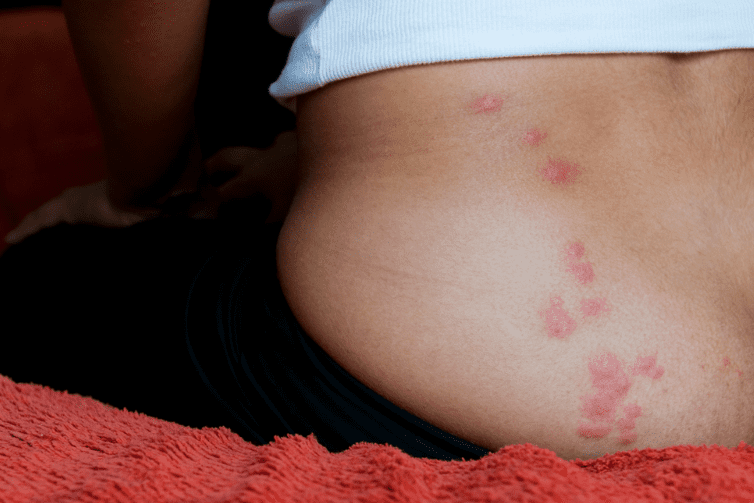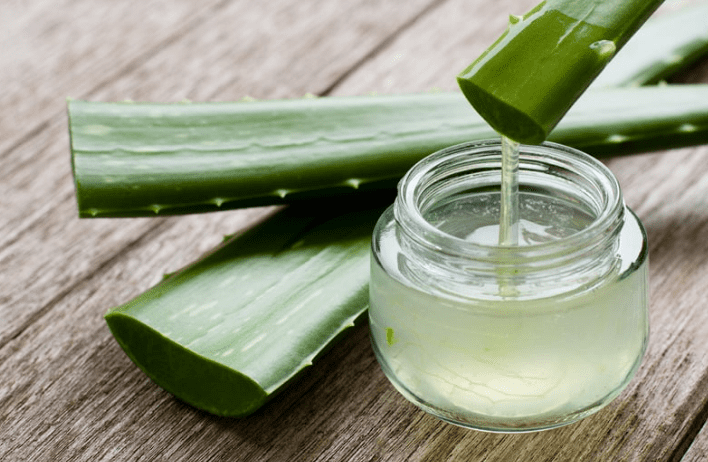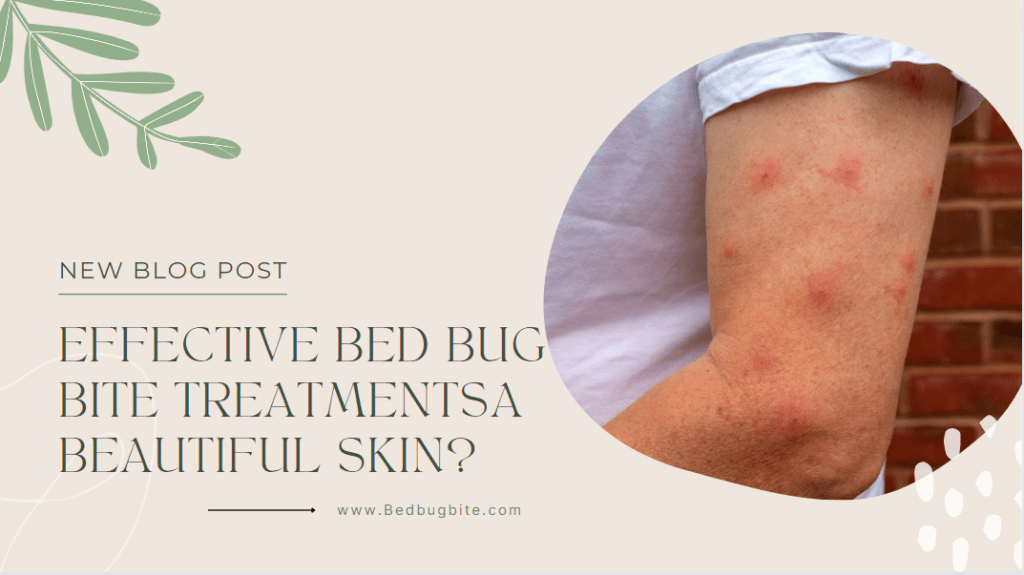Introduction
Effective Bed Bug Bite Treatments. Welcome to your go-to guide on navigating the discomfort of bed bug bites and finding the most effective treatments available. Bed bugs, those tiny, elusive pests, have a notorious reputation for disrupting our peace of mind with their unwelcome bites. Recognizing the urgency to address these bites not only stems from a desire for immediate relief but also from the necessity to prevent potential health implications.
This article is meticulously crafted to arm you with the knowledge to identify bed bug bites. Understand their health impacts, and explore both immediate and long-term treatment options. Our discussion will extend beyond the surface symptoms, delving into preventive measures to protect your home from future infestations. By the end of this journey, you’ll be equipped with the essential tools and strategies to mitigate the effects of bed bug bites. Ensuring your living space remains a sanctuary of comfort and safety. …Click Here for more Bed Bug Articles!
In our pursuit of clarity and authority on the subject, we align our insights with leading experts in pest management and entomology. For instance, the Environmental Protection Agency (EPA) offers a wealth of knowledge on bed bug identification and the significance of professional extermination in managing infestations (source: EPA – Bed Bugs). By integrating reputable sources like the EPA, we ensure that our recommendations are not only practical but also grounded in scientific research and expert consensus.
Understanding Bed Bug Bites
Identifying bed bug bites is the first critical step towards finding relief and preventing further discomfort. These bites often appear as small, red, and sometimes itchy bumps on the skin. Typically in a line or cluster, signaling the bed bug’s feeding path. Unlike other insect bites, bed bug bites can manifest several days after being bitten, making them harder to immediately recognize. Understanding the appearance, patterns, and symptoms associated with these bites is crucial. It helps distinguish them from other insect bites and allergens, guiding you towards the appropriate treatment. The health implications of bed bug bites extend beyond mere physical discomfort. While most individuals experience mild reactions, some may develop severe allergic responses requiring medical intervention.
How to Identify Bed Bug Bites

Bed bug bites are characterized by:
- Appearance: Small, raised, red welts
- Patterns: Bites often occur in a line or cluster
- Symptoms: Itching, redness, and swelling
It’s important to note that reactions to bed bug bites can vary significantly from person to person. While some may show no visible signs, others might experience pronounced swelling or an allergic reaction. This variability underscores the importance of closely monitoring bite reactions and seeking professional advice when necessary.
The Health Implications of Bed Bug Bites
The majority of bed bug bite reactions are mild, presenting minimal health risks. However, in rare cases, individuals may experience severe allergic reactions. Leading to symptoms such as difficulty breathing, swelling of the face, or hives. These symptoms warrant immediate medical attention. Chronic attacks can also lead to sleep disturbances and significant psychological stress. Highlighting the need for effective management and prevention strategies.
Why Some People React Differently to Bed Bug Bites
The variance in human reactions to bed bug bites is influenced by several factors. Including the body’s immune response to the bed bug’s saliva and an individual’s skin sensitivity. Over time, people who are frequently bitten may also develop a tolerance, leading to less pronounced symptoms. Understanding these differences is essential for tailoring treatment and prevention approaches to each individual’s experience.
Through a detailed exploration of bed bug bites, their identification, health implications, and the reasons behind varied human reactions, we lay the groundwork for effectively addressing and managing these pests. Our commitment to providing thorough and reliable information is supported by reputable sources such as the Centers for Disease Control and Prevention (CDC). Which offers additional insights into the nature of bed bug bites and their impact on public health (source: CDC – Bed Bugs). This foundational knowledge is pivotal in navigating the challenges posed by bed bug infestations and ensuring the well-being of affected individuals.
Immediate Relief: Treating the Symptoms
Long-term solutions for managing bed bug bites extend beyond treating the immediate discomfort. They involve implementing strategic measures to prevent future infestations. The cornerstone of bed bug bite prevention lies in creating an environment that is inhospitable to these pests. This includes regular inspections of your living spaces. Adopting protective measures for your bedding and furniture, and understanding when it’s time to call in professional exterminators. By integrating these strategies into your routine, you can significantly reduce the likelihood of bed bug encounters. Ensuring your home remains a safe and comfortable haven.
Strategies for Bed Bug Prevention in Your Home
Preventing bed bug infestations requires diligence and a proactive approach:
- Regular Inspection and Cleaning Tips: Conduct thorough inspections of bedding, furniture, and potential hiding spots regularly. Vacuuming frequently and decluttering your home can reduce bed bug hiding places.
- Protective Measures for Bedding and Furniture: Encase mattresses and pillows in bed bug-proof covers. Consider using light-colored bedding to easily spot any signs of bed bug activity.
The Role of Professional Extermination in Bed Bug Control
Despite best efforts, some infestations may become too severe for DIY measures. Professional exterminators offer comprehensive solutions, employing a combination of heat treatment, chemical treatments, and preventative strategies to eradicate bed bugs from your home. They also provide valuable advice on maintaining a bed bug-free environment post-treatment.
The effectiveness of these long-term preventive strategies is supported by research and recommendations from the National Pest Management Association (NPMA). A respected authority in the pest management industry. According to NPMA, professional extermination, combined with preventive home care, offers the best defense against bed bug infestations (source: National Pest Management Association – Bed Bugs). By adhering to these guidelines, homeowners can protect their families from the nuisance and health risks associated with bed bug bites.
Embracing these long-term solutions not only addresses the immediate issue of bed bug bites but also fortifies your home against future invasions. This proactive stance ensures your living environment remains a sanctuary, free from the distress and discomfort bed bugs can cause.
The Role of Antihistamines and Pain Relievers
The role of antihistamines and pain relievers in the management of bed bug bites is pivotal. Offering a dual approach to alleviating the symptoms. Antihistamines, by curbing the body’s allergic response, can significantly reduce itching and discomfort associated with bed bug bites. Pain relievers, on the other hand, are effective in managing the pain and swelling that can sometimes accompany these bites. Understanding how to safely and effectively use these medications can enhance your comfort during recovery, making it a crucial component of your bed bug bite treatment regimen.
Overview of How Antihistamines Can Help with Allergic Reactions
Antihistamines work by blocking the action of histamine, a substance in the body that causes allergic symptoms. For those with bed bug bites, oral antihistamines can be particularly effective in reducing itching and preventing the urge to scratch, which can lead to skin infections.
Pain Relievers for Managing Discomfort: What Works and What Doesn’t
Non-prescription pain relievers like ibuprofen and acetaminophen can be used to alleviate pain and reduce swelling associated with bed bug bites. It’s important to follow the recommended dosages and consider any personal health conditions that may affect the use of these medications.
Guidelines for Safe Usage of Medication for Bed Bug Bites
- Consult Healthcare Providers: Before starting any new medication, especially if you have pre-existing health conditions or are taking other medications, consulting with a healthcare provider is advised.
- Read Labels Carefully: Pay close attention to dosages and warnings to avoid overuse or interactions with other medications.
- Monitor for Adverse Reactions: While rare, if you experience any severe reactions or symptoms worsen after taking medication, seek medical advice promptly.
The effectiveness and safety of using antihistamines and pain relievers for bed bug bite symptoms are well-documented in medical literature, offering reassurance to those affected. For instance, the Mayo Clinic provides guidance on treating insect bites and stings, emphasizing the role of these medications in symptom management (source: Mayo Clinic – Insect Bites and Stings). Incorporating these treatments into your approach can significantly improve your quality of life during recovery. Reducing the impact of bed bug bites on your daily activities.
Home Remedies and Natural Treatments
Home remedies and natural treatments offer a gentler, often readily available alternative for alleviating the symptoms of bed bug bites. Many individuals turn to these solutions not only for their convenience but also for the minimal risk of side effects they carry. From aloe vera to baking soda, the realm of natural treatments is vast, offering a variety of options to suit different preferences and symptom severities. While not all home remedies may provide the same level of efficacy as medical treatments. They play a crucial role in offering immediate, accessible relief, making them a valued component of the bed bug bite management toolkit.
A Closer Look at Effective Natural Solutions
- Aloe Vera: Known for its soothing and anti-inflammatory properties. Aloe vera gel can be applied directly to bed bug bites to reduce itching and swelling.
- Baking Soda and Water: A paste made from baking soda and water can alleviate the itchiness associated with bed bug bites. This remedy works by neutralizing the acidic component of the bite, offering relief.
The Pros and Cons of Using Home Remedies

While home remedies are advantageous for their ease of use and natural composition, it’s important to recognize their limitations. They may not be as immediately effective as over-the-counter treatments for severe reactions and should not replace medical attention when necessary. However, for mild symptoms, they offer a safe and effective method for symptom relief.
Tips for Applying These Treatments for Best Results
- Test on a Small Area: Before applying a new substance to your skin. Test it on a small area to ensure there is no adverse reaction.
- Follow Instructions: Whether making a paste or applying a gel, follow the recommended instructions or dosages to avoid skin irritation.
- Be Patient: Natural remedies may take longer to provide relief compared to medical treatments. Allow time for the remedy to work and reapply as needed.
Integrating home remedies into your treatment approach for bed bug bites emphasizes the importance of accessibility and personal preference in managing health. The efficacy of these natural solutions is backed by countless personal testimonies and supported by sources like the American Academy of Dermatology. Which suggests that cool compresses and soothing lotions can be beneficial for treating bed bug bites (source: American Academy of Dermatology – Bug Bites and Stings). By choosing the right combination of home remedies and medical treatments, individuals can effectively manage the symptoms of bed bug bites, ensuring a quicker and more comfortable recovery process.
Identifying Signs That Require Medical Advice
Recognizing when to consult a healthcare professional is a critical aspect of managing bed bug bites effectively. Although most bed bug bites are mild and can be treated with over-the-counter remedies or home treatments, certain signs and symptoms necessitate medical advice. This step is paramount for individuals experiencing severe reactions or when the initial self-care measures fail to provide relief. By understanding the indications for seeking professional medical attention, individuals can ensure they receive the appropriate care. Potentially averting more serious health issues related to bed bug bites.
- Severe Allergic Reactions: Symptoms such as difficulty breathing, swelling of the lips, eyelids, or throat, and intense rash or hives are indicators of a severe allergic reaction that requires immediate medical attention.
- Signs of Infection: If the bite sites become increasingly red, swollen, warm to the touch, or produce pus, these could be signs of an infection that necessitates professional treatment.
What to Expect During a Medical Consultation for Bed Bug Bites
During a medical consultation, healthcare providers will assess the severity of the bites, review any allergic reactions. And possibly prescribe medication to alleviate severe itching, swelling, or infections. They may also offer advice on preventive measures to avoid future bites and manage any anxiety or sleep disturbances caused by the infestation.
The Importance of Mentioning Bed Bug Exposure to Your Healthcare Provider
It’s crucial to inform your healthcare provider about the possibility of bed bug exposure. This information can aid in the diagnosis and ensure that the treatment plan addresses both the symptoms and the underlying cause. Moreover, healthcare professionals can provide guidance on addressing the infestation at home, further protecting your health.
The guidance for when to seek medical attention for bed bug bites aligns with recommendations from health authorities such as the Centers for Disease Control and Prevention (CDC), which emphasizes the importance of professional medical care in cases of severe reactions or infections (source: CDC – Bed Bugs). By heeding these recommendations, individuals affected by bed bug bites can take proactive steps towards recovery, ensuring their well-being and mitigating the impact of the infestation.
Conclusion
In conclusion, effectively managing bed bug bites involves a multifaceted approach that includes identifying the bites. Treating symptoms with both medical and home remedies, and taking proactive steps to prevent future infestations. Understanding the various treatment options and when to seek medical advice are crucial components of this process. By following the guidelines and strategies outlined in this article, individuals can significantly mitigate the discomfort caused by bed bug bites and protect their homes from these unwelcome guests. It’s important to maintain vigilance and adopt preventive measures to ensure a bed bug-free environment. Thereby safeguarding your health and peace of mind.
Additional Resources
For those seeking more in-depth information or facing persistent bed bug problems, several reputable sources offer valuable insights and guidance:
- Environmental Protection Agency (EPA): Provides comprehensive details on bed bug identification, prevention, and eradication strategies (EPA – Bed Bugs).
- Centers for Disease Control and Prevention (CDC): Offers health-related information on bed bug bites and how to handle infestations (CDC – Bed Bugs).
- National Pest Management Association (NPMA): A resource for finding professional pest control services and learning about the latest in pest management (NPMA).
By equipping yourself with the knowledge and resources provided in this article, you are taking an important step towards overcoming the challenges posed by bed bugs. Remember, the key to managing bed bug bites lies not only in treating the symptoms but also in addressing the source of the problem through effective prevention and control measures. Stay informed, be prepared, and maintain a proactive stance to ensure your living space remains a comfortable and bed bug-free zone.




